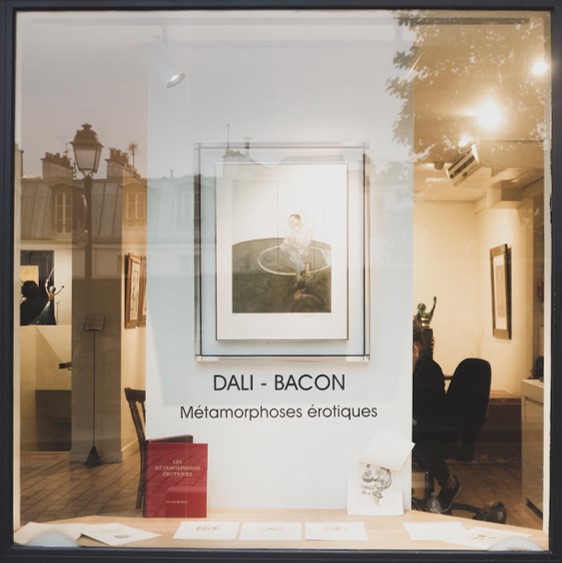
- This event has passed.
Dali – Bacon : Erotic Metamorphoses
16/10/2019 - 01/12/2019

These two contemporaries are not simply giants of the twentieth century, they feed on the sources of classicism, Velasquez (for the Portrait of Innocent X and his rank in the Dalinian pantheon) and surreal metamorphoses (including le Chien Andalou). The International Exhibition of Surrealism of 1936 could have welcomed the two artists on the same walls. But Bacon is rejected by André Breton, who a few years later will oust Salvador Dali from the movement. If they take different paths, both will be moved by their sentimental relationships and literature. In parallel with the retrospective exhibition of the last twenty years of Bacon in Beaubourg, Dali Paris invites you to consider this artistic confrontation.
In this exhibition, Dali Paris examines two artists rarely opposed in their determination to deform the human body. Salvador Dalì strives to transform it, in a perverse and adolescent way, while Francis Bacon evokes it in a neurotic way, with all its fluidity and its fluids.
For this confrontation, the gallery wanted to lean on the pillars of the two artists: their respective partners – Gala for one, John Edward for the other. If the encounter with Gala is a major upheaval, it nevertheless reveals Dalì to himself. As a sexual being, an artist and a man. From courtly love to sadistic love, he explores the eroticism with all the richness of his art. Bacon meanwhile, openly homosexual from an early age, is in the visceral exploration of his sexuality. Thus the representation he makes of it is less abrupt but no less penetrating.
Dali Paris scrutinizes two specific works: the centerpiece of the Triptych August and Marianne and the Knight.
Salvador Dalì represents the scene of the Marquis de Sade in all its ugliness in a very raw way by aestheticizing the whole by an opposition of complementary colors. Francis Bacon uses these same colors, in a combination of more greyish and somber hues, for this scene of intercourse, act which normally transcends corporeal beauty, thus bringing out all the psychological pain it can create for the homosexual artist.
Dali’s dreamlike approach is like a distorted mirror image to the darkness of Bacon’s paintings that he himself reckons is far less horrible than real life. By considering that “the reek of human blood smiles out at me,” Bacon reveals his inner struggles, whose objectification is reminiscent of the paranoid-critical method.
However, the classical method persists in the two artworks within their structures : the frame in the work fixes the action and constrain’s it, as well as the chiselled curves which evoke bodily beauty. An interesting similarity is also created with the levitation of the male dalinian character.